Creole Seasoning Recipe
This post may contain affiliate links. Please read my disclosure policy.
My homemade Creole seasoning is a blend of flavorful ingredients that are easy to find — and easy to pronounce! No preservatives, no excess salt, and no fuss.
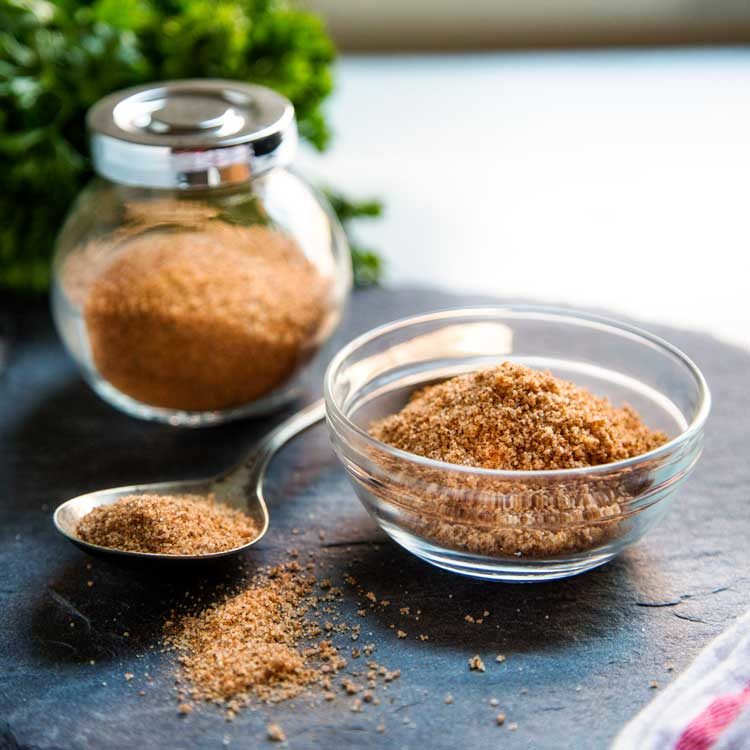
Creole seasoning is a Lousisana-style blend of spices that has more to offer than just heat! It combines the unique tastes of southern European, Native American, African, and Caribbean cuisines — the melting pot of people that make up the Creole culture of New Orleans.
Table of Contents
It has more to offer than just heat. An authentic Creole seasoning recipe contains a variety of fresh and herbal seasonings including thyme and oregano, keeping the heat more on the mild side. It’s a great blend for adding rich, savory flavor without overwhelming the taste buds with spice.
Pork, beef, shrimp, and beans — there isn’t a protein you can’t pair with Creole seasoning. I use it when I prepare shrimp and grits, Southern-style pulled pork sandwiches, and authentic New Orleans jambalaya.
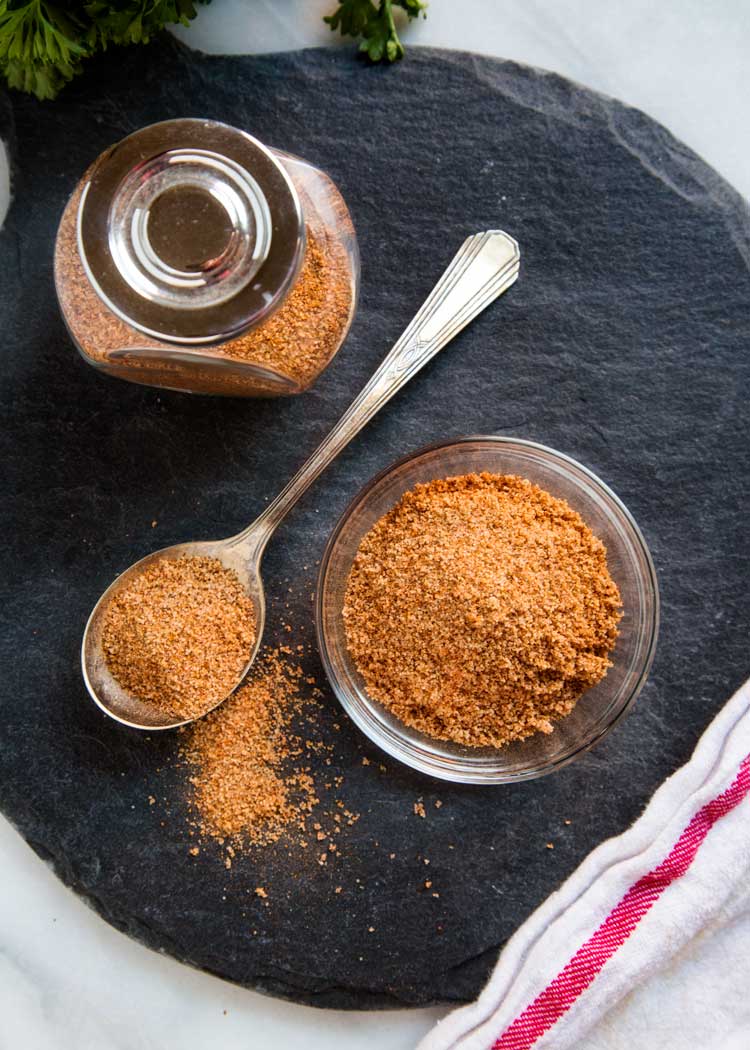
Cajun or Creole?
Cajun and Creole cuisines both hail from Louisiana but have distinct roots and flavors. Cajun cooking originates from the Acadian settlers, focusing on hearty, rustic dishes with French and Southern influences. It features ingredients like smoked meats, game, and trinity vegetables (onions, bell peppers, and celery). Creole cuisine, on the other hand, stems from New Orleans’ multicultural history, blending French, Spanish, African, and Caribbean elements. Creole dishes tend to be more refined, using a variety of spices, tomatoes, and seafood. While both celebrate Louisiana’s rich culinary heritage, Cajun is rural and robust, while Creole is urban and sophisticated.
- Paprika – Smoked paprika gives this blend its hot red color. It’s also one of the most pronounced flavors — substituting isn’t recommended.
- Garlic Powder & Onion Powder – This dynamic duo adds much-needed depth and complexity to any homemade spice blend.
- Cayenne Pepper – Made with cayenne peppers that have been dried and finely ground, this spice is responsible for most of the heat in this blend. If you find this Creole seasoning recipe to be too hot for your liking, you can lessen the amount of cayenne added.
- Dry Mustard – Rather flavorless on its own, dry mustard adds heat and bitterness once cooked. There’s no good substitute, other than adding prepared mustard to whatever dish you’re adding the Creole seasoning to.
- Salt – I use only a small amount of salt in homemade blends — not only because I like to keep the sodium low, but also because it’s simply easier to add salt as needed while you’re cooking.
- Black Pepper – As heat is derived from a couple of seasonings in this blend, there’s no need to overdo the black pepper. Taste test and add more if desired while cooking.
- Dried Oregano – Bitter and earthy, this herb can be replaced by dried basil or parsley if needed.
- Celery Salt – It’s aromatic and grassy, adding much of that fresh “green” flavor attributed to Creole cuisine.
- Thyme – This herb is a bit “woodsy” — peppery, earthy, and lemony. Try rosemary or marjoram if you need a substitute.
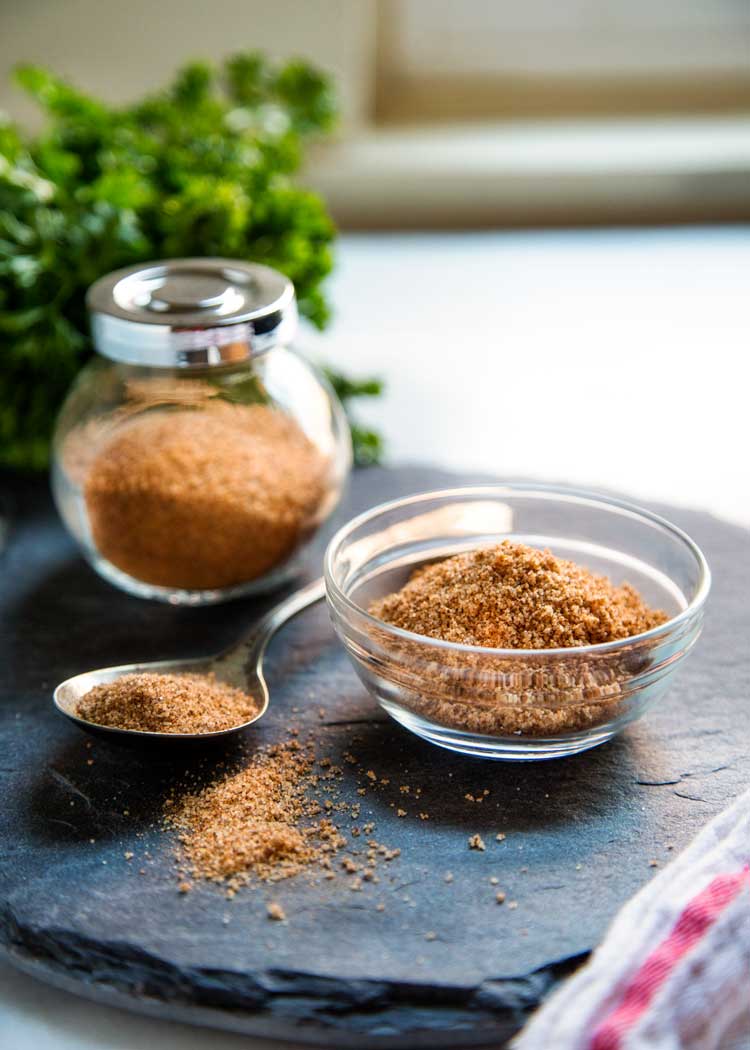
- Blend & Store. Add all of the spices to a spice grinder or food processor. Pulse several times until all seasonings are evenly distributed. Transfer to an airtight storage container and keep in a cool, dry place for up to 6 months.
Recommended Tools
- Spice Grinder or Food Processor – The best way to ensure all of the salt, pepper, herbs, and spices are evenly distributed in a spice blend is to use a spice grinder or food processor. You could even use a coffee bean grinder in a pinch!
Storing
While ground spices don’t necessarily have an expiration date, they aren’t going to remain strong and fresh-tasting forever.
Once opened, spices tend to lose their intensity in 6 to 8 months. This Creole seasoning recipe could last longer, depending on the freshness of the spices and if you ground them fresh yourself rather than using store-bought spices.
The best way to keep your homemade spice blends fresh is to keep them in a cool, dry place and store them in an airtight container. Take care while storing if you live in a humid climate.
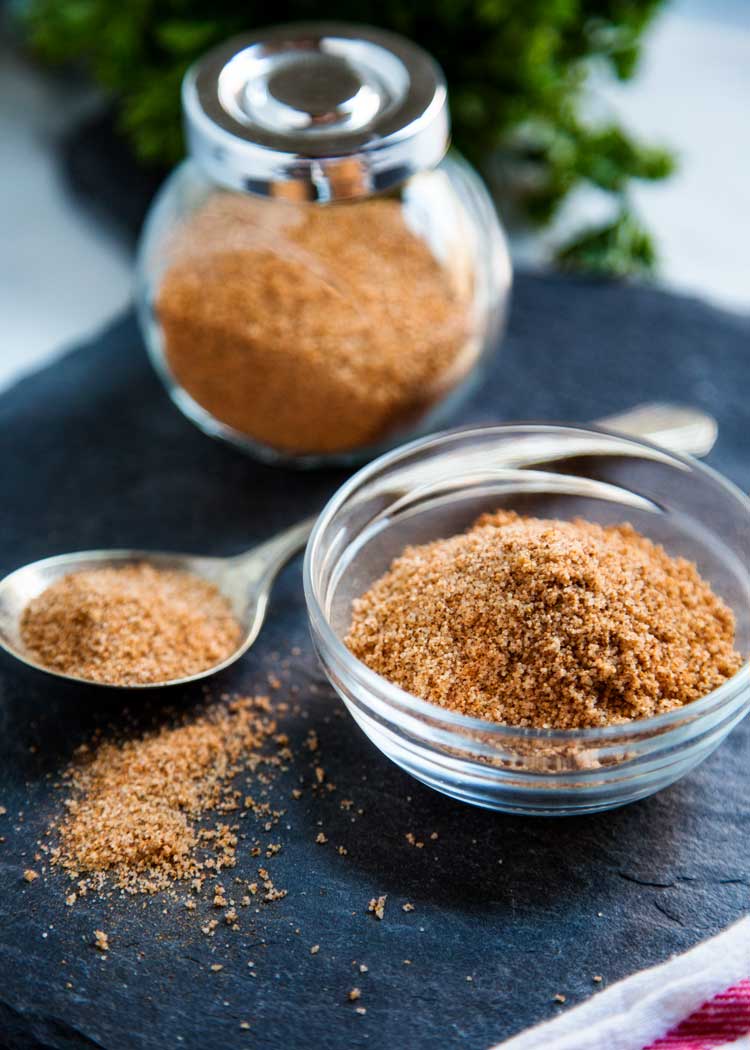
The Creole people were the direct descendants of the Cajun settlers in Louisiana. As such, the two cuisines are very closely related and sometimes indiscernible. Whether a dish is Cajun or Creole may even simply come down to the ancestry of the person who created the recipe!
The easiest way to contrast the two is to say that Cajun seasoning is hot, while Creole seasoning is more herbal. But blends vary, and you may well find a Creole recipe with more heat than you bargained for!
Any blend that contains salt is prone to clumping. The chemical composition of salt makes it naturally attract water from the air, which in turn causes the granules and surrounding ground spices to clump together.
The best defense, therefore, is to keep spices stored in a dry place — away from stoves, windows, and any place in your kitchen in which the temperature fluctuates often.
Finally, use a good container. I like to clean and reuse old spice containers that I’ve bought from the store!
If the spices used in my Creole seasoning recipe aren’t readily available, then a Cajun blend is an acceptable, albeit hotter, alternative.
Residents of the Mid-Atlantic will offer Old Bay as a good alternative, especially if you’re preparing seafood. If you look at the ingredient list in my homemade Old Bay substitute, you’ll see that the spices and herbs are actually very similar!
Share this recipe on Pinterest!
Love this recipe? Share it with the world on Pinterest.
Subscribe to my Newsletter, follow me on Facebook, Pinterest, Instagram and YouTube for all my latest recipes and videos.
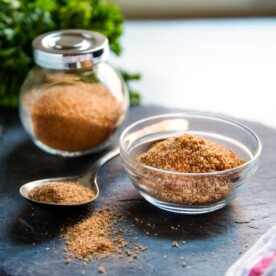
Homemade Creole Seasoning
Ingredients
- 2 tbsp paprika
- 2 tbsp garlic powder
- 1 tbsp salt
- 1 tbsp celery salt
- 1 tbsp black pepper
- 1 tbsp cayenne pepper
- 1 tbsp onion powder
- 1 tbsp dried oregano
- 1 tbsp thyme
- 1 tsp dry mustard
Instructions
- Add all the ingredients to a spice grinder or food processor and pulse several times to combine and store in an airtight container.
Notes
Nutrition
The information shown is an estimate provided by an online nutrition calculator. It should not be considered a substitute for a professional nutritionist’s advice.
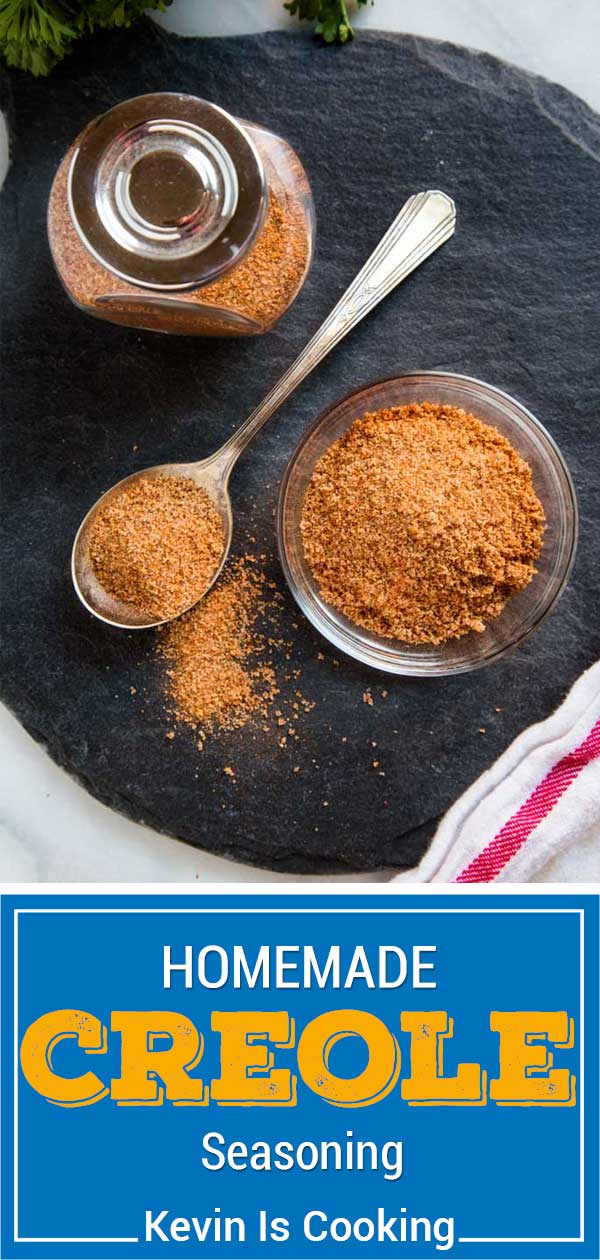
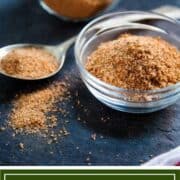

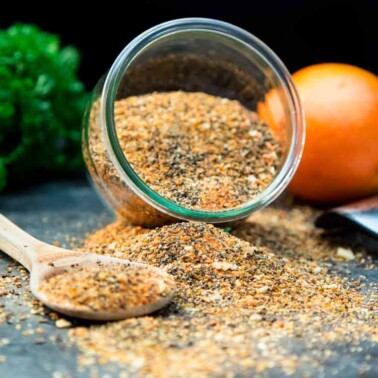
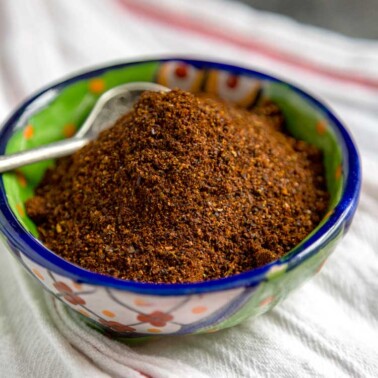
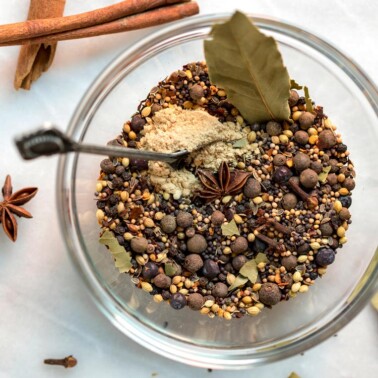
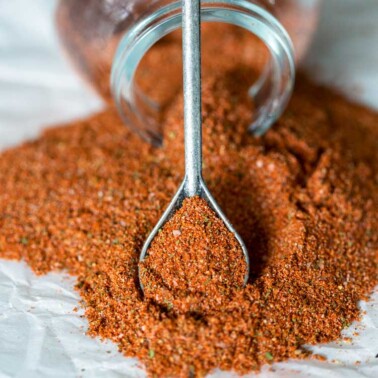












This seasoning recipe sounds wonderful
Thanks. Hope you give this one a go Sylvia!
Since eliminating carbs as much as possible, we’ve found some stupidly delicious combinations of things that were right in front of our face. A baked sweet potato with this sprinkled inside with some yogurt butter is pure bliss. Also use it as a rub on zucchini-turkey burgers. Thanks for sharing. Love it.
Excllent and sounds delicious Kim, thanks!
Would you use Smoked Paprika or regular Paprika?
Either one you have on hand would be just fine!
Is this the same as Big Kevin’s spice mix?
No. This is my own spice blend, and have never heard of, or been called, Big Kevin. Hope you give it a try and enjoy it Carol-Leah.
I FREAKING love creole oa mm nom mmmm taasty mmmm nasmsommn
WHAT? ME TOO
Enjoy!
I mean who doesn’t right?! 🙂
This blend of creole goodness is so simple I don’t know why I have not thought of trying this sooner! Looking forward to trying this DIY recipe with some gumbo, soon!
Glad I could be there for the assist Dan! I love spice blends, you can find all of them here Spice Blends.
I don’t think many people are lucky enough to eat at fine creole restaurants. Otherwise, the’d never mistake the term for cajun. It’s like the difference between French food and French fries. (Don’t get me wong – I love French fries.) Thanks for the blend!
Nice, then my job is done. Thanks Jeff, appreciate it. 🙂
My family from the islands would completely agree; huge difference!
Thanks Michelle. 🙂